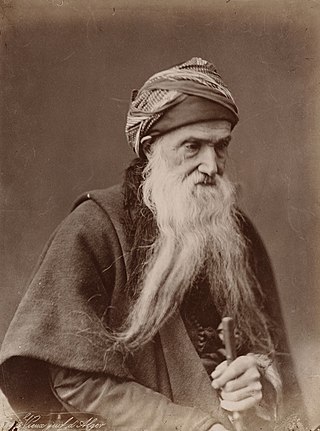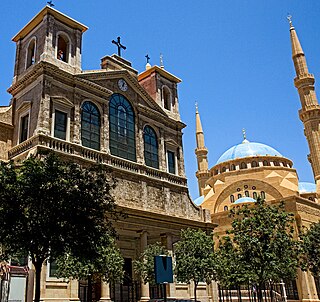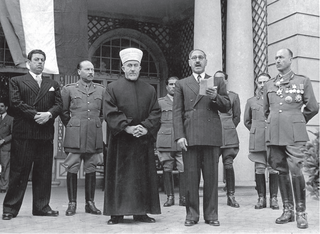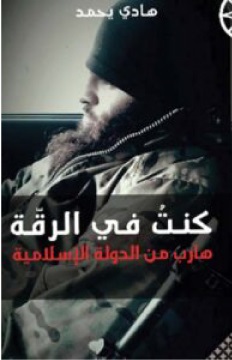Antisemitism has increased greatly in the Arab world since the beginning of the 20th century, for several reasons: the dissolution and breakdown of the Ottoman Empire and traditional Islamic society; European influence, brought about by Western imperialism and Arab Christians; Nazi propaganda and relations between Nazi Germany and the Arab world; resentment over Jewish nationalism; the rise of Arab nationalism; and the widespread proliferation of anti-Jewish and anti-Zionist conspiracy theories.

Djerba, also transliterated as Jerba or Jarbah, is a Tunisian island and the largest island of North Africa at 514 square kilometers (198 sq mi), in the Gulf of Gabès, off the coast of Tunisia. Administratively, it is part of Medenine Governorate of this North African country. The island had a population of 139,544 at the 2004 census, which rose to 163,726 at the 2014 census. Citing its long and unique history, Tunisia has sought UNESCO World Heritage status protections for the island, and, in 2023, Djerba was officially designated a World Heritage Site.
Dhimmitude is a polemical neologism characterizing the status of non-Muslims under Muslim rule, popularized by the Egyptian-born British writer Bat Ye'or in the 1980s and 1990s. It is a portmanteau word constructed from the Arabic dhimmi 'non-Muslim living in an Islamic state' and the French (serv)itude 'subjection'.
ʻAṣmāʼ bint Marwān a female Arab poet said to have lived in Medina in 7th-century Arabia. Early writers of Muhammad's biography claimed that she was assassinated for her agitating against Muhammad.

The ancient El Ghriba Synagogue, also known as the Djerba Synagogue, is located on the Tunisian island of Djerba. It is situated in the Jewish village of Hara Seghira, several kilometres southwest of Houmt El Souk, the main town of Djerba.

The history of Jews in Algeria goes back to Antiquity, although it is not possible to trace with any certainty the time and circumstances of the arrival of the first Jews in what is now Algeria. In any case, several waves of immigration helped to increase the population. There may have been Jews in Carthage and present-day Algeria before the Roman conquest, but the development of Jewish communities is linked to the Roman presence. Jewish revolts in Israel and Cyrenaica in the 1st and 2nd centuries certainly led to the arrival of Jewish immigrants from these regions. The vast majority of scholarly sources reject the notion that there were any large-scale conversions of Berbers to Judaism.
Arab Jews is a term for Jews living in or originating from the Arab world. The term is politically contested, often by Zionists or by Jews with roots in the Arab world who prefer to be identified as Mizrahi Jews. Many left or were expelled from Arab countries in the decades following the founding of Israel in 1948, and took up residence in Israel, Western Europe, the United States and Latin America.

The history of the Jews in Tunisia extends nearly two thousand years to the Punic era. The Jewish community in Tunisia is no doubt older and grew up following successive waves of immigration and proselytism before its development was hampered by anti-Jewish measures in the Byzantine Empire. The community formerly used its own dialect of Arabic. After the Muslim conquest of Tunisia, Tunisian Judaism went through periods of relative freedom or even cultural apogee to times of more marked discrimination. The arrival of Jews expelled from the Iberian peninsula, often through Livorno, greatly altered the country. Its economic, social and cultural situation has improved markedly with the advent of the French protectorate before being compromised during the Second World War, with the occupation of the country by the Axis. The Nakba and the creation of Israel in 1948 provoked a widespread anti-Zionist reaction in the Arab world, to which was added nationalist agitation, nationalization of enterprises, Arabization of education and part of the administration. Jews left Tunisia en masse from the 1950s onwards because of the problems raised and the hostile climate created by the Bizerte crisis in 1961 and the Six-Day War in 1967. According to the Jewish Virtual Library, the Jewish population of Tunisia, was estimated at 105,000 individuals in 1948. These Jews lived mainly in Tunis, with communities present in Djerba. The 2022 Report on International Religious Freedom by the U.S Department of State stated that "according to members of the Jewish community, there are approximately 1,500 Jewish citizens in the country".

The Lebanese people are the people inhabiting or originating from Lebanon. The term may also include those who had inhabited Mount Lebanon and the Anti-Lebanon Mountains prior to the creation of the modern Lebanese state. The major religious groups among the Lebanese people within Lebanon are Shia Muslims (27%), Sunni Muslims (27%), Maronite Christians (21%), Greek Orthodox Christians (8%), Melkite Christians (5%), Druze (5%), Protestant Christians (1%). The largest contingent of Lebanese, however, comprise a diaspora in North America, South America, Europe, Australia and Africa, which is predominantly Maronite Christian.
The Nahda, also referred to as the Arab Awakening or Enlightenment, was a cultural movement that flourished in Arab-populated regions of the Ottoman Empire, notably in Egypt, Lebanon, Syria, and Tunisia, during the second half of the 19th century and the early 20th century.

Lebanon is an eastern Mediterranean country that has the most religiously diverse society within the Middle East, comprising 18 recognized religious sects. The religions are Islam and Christianity. The Druze comprise around 5% of Lebanon's population.

The Arab world consists of 22 states. As of 2021, the combined population of all the Arab states was around 475 million people.
Of the religions in Tunisia, Islam is the most prevalent. It is estimated that in 2022, approximately 99% of Tunisia's inhabitants identified themselves as Muslims.

La Ghriba is a picturesque documentary about the 2,600-year-old Jewish community on the Tunisian island of Jerba, where Jews and Muslims live side-by-side peacefully.

Rima Fakih Slaiby is an American former professional wrestler and beauty pageant titleholder who was crowned Miss USA 2010. Having previously been crowned Miss Michigan USA 2010, Fakih was the first Arab American woman and the third woman from Michigan to win the Miss USA title.

Relations between Nazi Germany (1933–1945) and the Arab world ranged from indifference, resistance, collaboration and emulation. Nazi Germany used collaborators throughout the Arab world to support their political goals. The cooperative political and military relationships were based on shared hostilities towards common enemies, such as the United Kingdom, the French Third Republic, along with communism, and Zionism. Another foundation of such collaborations was the antisemitism of the Nazis and their hostility towards the United Kingdom and France, which was admired by some Arab and Muslim leaders, most notably the exiled Palestinian leader, Grand Mufti of Jerusalem, Amin al-Husseini.
The Gabès riots targeted the Jewish community in Gabès, Tunisia. A notable exception to the relatively good Jewish-Muslim relations in the city, it was the worst outbreak of violence against Jews in North Africa during World War II.

I Was in Raqqa is a book about Mohamed Fahem, a former member of Islamic State (ISIS), written by Hedi Yahmed. Fahem is a Tunisian jihadist who joined ISIS in November 2015.
Khawla Hamdi is a Tunisian-born Arabic-language author born on July 12, 1984, in Tunis, Tunisia. She is a professor at the King Saud University in Riyadh, where she teaches Information technology and currently resides in Riyadh. She has several best-selling novels in her literary career.
Amira Charfeddine is a Tunisian novelist. Her first novel, Wild Fadhīla, was written in Tunisian Arabic and is the first major Tunisian novel to feature a gay protagonist. The novel was commercially successful, selling 2,000 copies within a month of its release in April 2019. It was awarded the Ali Douagi prize from the Derja Association for best work written in Tunisian Arabic in 2019.











